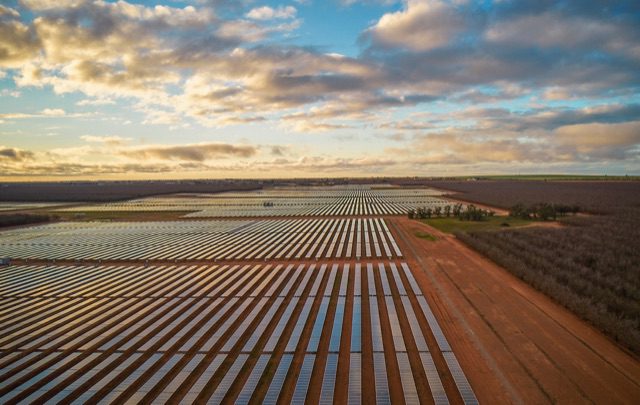Rio Tinto has signed a contract to buy all the electricity from what will be the biggest solar project on Australia’s main grid – a 1.1 gigawatt (GW) facility near Gladstone in Queensland that will help power the mining giant’s smelting and refinery operations there.
The Upper Calliope solar farm (official size 1.3 GWp and 1.1 GW ac) is being built and will be operated by Denmark-based European Energy, a relatively new player in the Australian market.
The solar project be located across more than 2,700 hectares about 50kms south west of the city, but it has still to obtain development and grid approvals. Construction is expected to begin in 2025 or 2026 and will take two years to build.
“This agreement is a first important step in our work to repower our Gladstone operations and illustrates our commitment to keeping sustainably powered industry in Central Queensland,” Rio Tinto CEO Jakob Stausholm said in a statement.
“The task remains challenging, but we have a pathway to provide the competitive, firmed power our Gladstone plants need and we are continuing to work hard with all stakeholders, including the Queensland and Australian governments, on getting there.
“Competitive capacity, firming, and transmission, are critical to developing a modern energy system that can ensure more large-scale renewables development in Queensland and help guarantee the future of Australian industry.”
Rio Tinto is seeking up to 4 GW of wind and solar to provide clean power to and guarantee the future of its three main assets in the region – the Boyne Island aluminium smelter, the Yarwun alumina refinery and the Queensland alumina refinery.
All three assets are now supplied by coal – and the Queensland grid remains the most coal dependent in the country despite its 80 per cent renewable target for 2035 – but Rio Tinto and other miners know that they can only remain competitive with low cost renewables.
Rio Tinto says it may seek more wind and solar as electrifies the various production processes of its businesses, including at the smelters and refineries.
The contract with European Energy is for 25 years, and Rio Tinto says this solar farm alone will cut its emissions by 1.8 million tonnes a year. It will account for around five per cent of the state’s current demand.
“The Upper Calliope Solar Farm is not just a solar power project; it’s a testament to our shared vision for a greener future,” European Energy CEO Erik Andersen said in a statement.
“By supplying renewable energy to one of Australia’s key industrial hubs, we are setting a new standard for industrial energy consumption.
“This project underlines our dedication to driving the transition towards renewable energy in Australia and demonstrates the potential of solar power in transforming the energy landscape of the region.”
The scale of the Upper Calliope solar farm will double the company’s current portfolio of wind and solar assets under construction, which according to its latest quarterly update stands at just over 1GW. This includes 11 relatively small solar farms totalling 540 MW of capacity. It has a further 60GW in the development pipeline.
This includes another gigawatt scale solar project in Queensland – Sawpit – and earlier this year announced it had begun construction of the 54 MW Mokoan solar project in Victoria.
Rio Tinto, meanwhile, says it continues to assess other projects offered in response to its formal Request for Proposals which includes renewables and firming projects in Central and Southern Queensland.
Rio Tinto and other big iron ore miners such as BHP and Fortescue are looking to replace fossil fuels with renewables and storage at their massive Pilbara operations.
Fortescue has a goal of zero fossil fuels by 2030, while BHP has recently issued its own RFP for more than half a gigawatt of wind, solar and battery storage for its Pilbara mines, and Rio Tinto is understood to have done the same.
BHP last year signed a landmark “baseload renewables” supply deal with Neoen, who will use the new Goyder South wind farm and the Blyth battery project to provide a continuous supply to the giant Olympic Dam mine in South Australia.
The Australian Aluminium Council said the Rio Tinto solar deal is exciting news for the local industry, and a sign of the potential to transition to a clean energy future.
“This announcement will be welcomed by the employees, contractors and community of Gladstone as an indication of a sustainable long term future,” said Marghanita Johnson, the CEO of the Australian Aluminium Council.
“Australia has a large bauxite resource and alumina refining, aluminium smelting and downstream manufacturing base, and under the right framework has the potential for future large scale, low-emissions industrial production, with social and economic benefits to match.”










